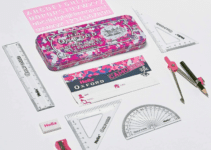Wearable tech which alerts astronauts of dangers could one day help astronauts from getting lost in space, but it would require a trust for technology deeper than what humans currently have.
Researchers at Brandeis University in Massachusetts are developing devices which buzz like cellphones to give a tactile ‘nudge’ that can help wearers orient themselves correctly. The NASA-funded study shows the cues could help astronauts fight jolts of confusion, known to scientists as spatial disorientation, arising from temporarily obscured vision, like when flying through a thick layer of clouds or in zero gravity.
Spatial disorientation is the leading cause of fatal aircraft accidents, often traced to confused pilots making decisions by feel rather than fully trusting their instruments. These dangers apply to space travel too. When astronauts leave Earth, they lose crucial gravitational cues humans fundamentally rely on to orient themselves, causing a feeling of being adrift in space. Yet, constantly monitoring and interacting with automated systems in the spacecraft is crucial to maintain geographic awareness and a sense of speed is crucial during spaceflight, especially during controlled descents onto the moon or Mars.
“Our biology has not evolved to deal with aerospace conditions,” Vivekanand Vimal, a research scientist at Brandeis University where he experiments ways to train people to trust technology in space, told Space.com. “It wasn’t designed to deal with these weird maneuvers that otherwise are not experienced.”
Related: NASA’s Astrobee robot ‘Honey’ flies home to its International Space Station hive

Wearable tech
The vibrating devices, or vibrotractors, developed by Vimal and his team provide cues via skin to the vestibular system, the apparatus in our inner ear which tells the brain the tilt of our head and helps to keep us on an even keel. Parts of the inner ear are home to hairlike cells crowned with tiny structures called otoliths. When we move, gravity pulls on these structures, transmitting cues to the brain how off we are from our balance.
Previous experiments of simulated moon landings had found participants couldn’t adjust seamlessly to the shift in gravity, causing them to perceive their vehicle was upright when in reality it was significantly tilted. If it pans out, Vimal says the new technology could transcend this limitation in human biology and be a useful countermeasure to spatial disorientation, when one loses sense of direction, including where “up” really is.
To figure out if their vibrations-inducing method could work in stressful circumstances, Vimal and his colleagues Alexander Panic, James Lackner and Paul DiZio created a disorienting environment by strapping people into a chair-like machine programmed to tip on either side without additional help. Across two days, 30 college students, shut off from receiving sensory inputs by being blindfolded and wearing noise canceling headsets, tried to stabilize the “space chair” using a joystick. 10 of them received specific training, 10 were strapped with the vibrating devices — four on each arm, and the remaining 10 received both.
For half the experiment, the space chair was positioned upright to mimic Earth’s gravity and participants could use their natural gravitational cues to accurately orient themselves. To simulate zero gravity conditions, the participants were placed on their backs while still sitting in the chair, at which point the otoliths could no longer help determine speed or tilt. One vibrating device buzzed when a participant strayed one degree from the balance point, two hummed at seven degrees, three at 15, and all four hissed at 31 degrees. If one drifted 60 degrees away, they were considered to have crashed.
“The hope was these vibrations could substitute the missing otolith cues and correct perceptual errors people were having,” said Vimal.

The buzzing technology noticeably helped but was not enough to stop people from wildly oscillating and crashing by losing control of the space chair, even the subgroup who received some training, Vimal and his team found.
“The question really is that if you put these devices on the human, how do you become one with it?” he said. “Especially while disoriented, when you can’t even trust what’s inside your body, how then do you trust these external things?”
The findings point to a deeper, more fundamental conflict within humans, perhaps an inherent gut feeling preventing us from fully trusting technology to keep us away from danger. Participants said that while they were aware of and trusted the vibrotractors, their gut-level responses were often opposite to what the devices suggested. Vimal and his colleagues suspect the technology introduced a feeling of conflict within them which created confusion, sometimes causing incorrect split-second decisions.
“It turns out cognitive trust doesn’t mean that you’ll actually be able to rely on the device,” said Vimal. “You’re making gut-level decisions with the joystick trying to balance yourself, and to build that gut-level bond you need more than just cognitive trust.”
Why participants of this study couldn’t overcome the conflict and allow themselves to be fully guided by the vibrotractors remains an open question. To figure that out, Vimal said his team is exploring adding some sort of pressure cues to convey the visceral feeling of nearing a crash point.
Specific training to build a bond between humans and the technology so they rely on vibrotractors once disoriented would help, he added. This could be done by having participants figure out random, pre-programmed balance points on the space chair using the device alone.
The study only considered a zero-gravity simulation, so researchers plan to follow it up with chair experiments that simulate the gravity astronauts would experience on the moon or Mars.
This research is described in a paper published Friday (Nov. 3) in the journal Frontiers in Physiology.
Join our Space Forums to keep talking space on the latest missions, night sky and more! And if you have a news tip, correction or comment, let us know at: [email protected].


